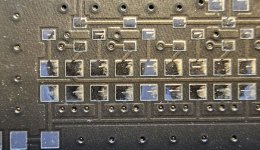Noise figure doesn't make any sense without specifying the source impedance. I the particular case of JFETs, where the input current noise can usually be ignored, the source impedance is in fact it's real (resistive) part.
OnSemi doesn't specify the source impedance in the CPH3910 datasheet, but given the main application for this device (RF input stages) and the frequency at which the noise figure is specified (100MHz), we can infer that the source impedance is the RF standard 50ohm.
Using 50ohm as source impedance and the 2.8dB noise figure we can immediately calculate (following the great National Semiconductor AN-104
http://www.electro.fisica.unlp.edu.ar/temas/pnolo/p1_AN-104.pdf) the equivalent noise of the CPH3910 as 45ohm, which is about 0.9nV/rtHz. This value is very close to what I measured for the CPH3910, just a smidge noisier that the BF862, but with lower Ciss. Take a look here:
https://www.diyaudio.com/forums/equ...measurement-amp-ikoflexer-51.html#post5656050
Be aware there is a dual version of CPH3910 in a 5 pin SOT23 (source is common) you can always parallel JFETs without any matching, they won't hog current and the noise dependence on the actual drain current is very weak, so these devices are a space and cost saver if you plan to massively parallel them. There is also a CPH5905 which is a low noise 2SK3557 cascoded on the chip with a NPN bipolar device, also very useful for keeping the JFET Vds low and avoid extra gate current due to hot carrier injection.






